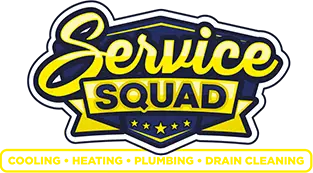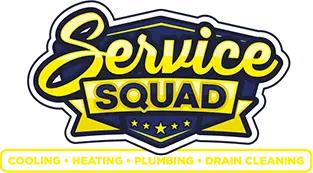Keeping Grease Traps Clean: Essential Drain Maintenance for Restaurants
In the bustling world of restaurant kitchens, it’s easy to overlook the systems that work silently behind the scenes—like grease traps. These traps play a crucial role in keeping your kitchen running smoothly and preventing plumbing disasters that can arise from clogged drains. As grease, oils, and fats are washed down the sink, grease traps act as guardians by intercepting these waste products before they enter the wastewater disposal system.
Neglecting this essential kitchen component can lead to serious consequences including back-ups, foul odors, and even health code violations, which no restaurant owner wants to face. Understanding the function of grease traps and maintaining them properly not only supports sanitary operations but also protects the environment from undue pollution. Regular cleaning and maintenance of grease traps is not just a regulatory requirement – it’s a crucial practice for any restaurant aiming for operational efficiency and a clean, safe working environment.
Let’s examine why keeping these systems in top shape is not only a good practice but also essential for your restaurant’s financial and operational health. This will save on costly repairs and ensure that your restaurant remains a favorite place for customers to dine without interruption.
Importance of Grease Trap Maintenance in Restaurants
Maintaining grease traps is not just a routine task; it’s a vital part of running a successful restaurant. Frequent cleaning and proper maintenance of grease traps ensure that kitchens avoid the buildup of fats, oils, and grease, commonly known as FOG. These substances are a leading cause of blockages in plumbing systems, and they pose a serious risk to the efficiency and sanitary conditions of restaurant operations.
If grease traps are not cleaned regularly, the accumulated grease can harden and become difficult to remove. This neglect can lead to clogged drains and backflows, which are not only unpleasant but also pose health hazards and can shut down a restaurant temporarily. Moreover, failing to maintain grease traps can attract fines and penalties from health inspectors. By keeping these systems clean, we prevent unpleasant odors, maintain indoor air quality, and ensure a cleaner, safer environment for both staff and patrons.
How Grease Traps Work and Why They Matter
Understanding how grease traps work is key to appreciating their importance in a restaurant setting. A grease trap is essentially a plumbing device designed to intercept greases and solids before they enter a wastewater disposal system. It works on the principle that fat, oil, and grease are lighter than water and will float to the top of the trap. The water, however, exits the trap and flows into the sewer system, leaving the grease behind.
This functionality is crucial because once grease enters the sewage system, it cools down, solidifies, and sticks to the inside of the pipes. Over time, this buildup can block entire pipes, leading to costly repairs and severe disruptions to a restaurant’s operations. Not only does this affect the business financially, but it can also damage the restaurant’s reputation if it leads to closures or hygiene issues. By understanding and maintaining these systems, we safeguard our facilities against such problems, ensuring uninterrupted kitchen operations and compliance with local regulations.
Step-by-Step Guide to Cleaning Grease Traps
Cleaning grease traps is a necessary task to ensure your restaurant operates smoothly without facing hygiene issues. First, ensure safety by wearing gloves and eye protection, as the materials you’ll be handling can be unsanitary and sometimes caustic. Begin by removing the lid from the grease trap gently to avoid damaging any gaskets. Next, use a measuring stick or a ruler to check the grease level, which helps in recording and monitoring the grease accumulation over time.
Once the grease level is noted, skim off the layer of grease and solid fats from the top and scrape the sides and the bottom of the trap to ensure all grease is removed effectively. These waste materials should be disposed of according to local regulations, which typically means placing them in a designated grease disposal bin. After removing the grease, scrub the trap with soap and warm water to clean any residual grease. Rinse it thoroughly to remove any soap residue. Before closing the lid, check and ensure all components are in good working condition and replace any worn-out parts.
Professional Grease Trap Maintenance and When to Hire Experts
While regular in-house cleaning is essential, there are times when you need to call in professional help for grease trap maintenance. Our professionals are equipped to handle large or severely clogged grease traps that require specialized equipment to clean thoroughly. Additionally, regular professional inspections can help identify potential issues before they turn into costly repairs.
Professionals can also work more efficiently with complex systems, ensuring that your restaurant complies with local health and safety regulations, which sometimes change and require different maintenance standards. Scheduling routine professional cleanings can extend the lifespan of your grease traps, prevent severe blockages, and maintain efficient kitchen operations.
Conclusion
Keeping your restaurant’s grease traps well-maintained is crucial for operational efficiency, safety, and compliance with local guidelines. Regular cleaning both in-house and by professionals plays a vital role in preventing the problems that could halt your kitchen’s operations.
At Service Squad, we understand the importance of maintained drainage systems, and we offer comprehensive drain cleaning services in Pasadena, CA, and surrounding areas to ensure your restaurant runs without interruption. Reach out to us for expert grease trap maintenance and experience why many businesses trust our professional solutions. Let us keep your establishment clean, compliant, and ready for business!


